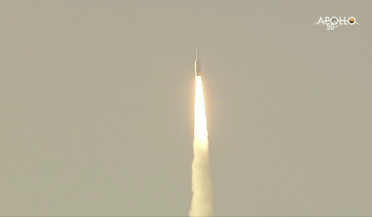 May 2020
Mixed reality in the design of space habitats
May 2020
Mixed reality in the design of space habitats
... contribute significantly to their general well-being. But such a luxury may not be practical on long-term, deep space missions. Mixed reality research In the near future, existing technological innovations such as mixed reality (MR) systems are...
 January 2021
Medical professionals and long-duration spaceflight
January 2021
Medical professionals and long-duration spaceflight
... radiation conditions communication with ground-based medical experts. Given the extreme autonomy of a deep space mission, it is necessary to provide a biomedical laboratory on board, and a flight surgeon should be clearly aware of its implementation...
 13 January 2021
The UK Space Agency and Rolls-Royce launch study into nuclear-powered space exploration
13 January 2021
The UK Space Agency and Rolls-Royce launch study into nuclear-powered space exploration
... knowledge of the Universe." Dr Graham Turnock, Chief Executive of the UK Space Agency, said: "Space nuclear power and propulsion is a game-changing concept that could unlock future deep-space missions that take us to Mars and beyond. This study will...
 October 2020
Pandemic impacts - the state of the ground segment
October 2020
Pandemic impacts - the state of the ground segment
... antenna. The 35-metre DSA, located 140 km north of Perth, Western Australia, is designed for communicating with deep-space missions and provides support to spacecraft such as Mars Express, Rosetta and Gaia. Cooperation In the absence of complete...
 April 2024
Agencia Espacial Española – Spain’s future assurance
April 2024
Agencia Espacial Española – Spain’s future assurance
... including Mars Express, Gaia, BepiColombo, Solar Orbiter, Juice and Euclid. It will also support future ESA deep-space missions such as Hera, PLATO and Comet Interceptor. “Bringing the agency to fruition was a complex proposition as there were...
 02 July 2019
Orion spacecraft's launch abort test completed successfully
02 July 2019
Orion spacecraft's launch abort test completed successfully
... control motor, and jettison motor. The system is built specifically for deep space missions and to ride on NASA’s powerful Space Launch System (SLS) rocket. “Launching into space is one of the most difficult and dangerous parts of going to the Moon...